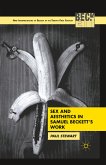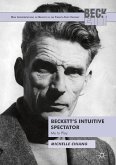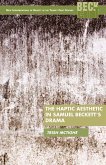This book considers how Samuel Beckett's critical essays, dialogues and reflections drew together longstanding philosophical discourses about the nature of representation, and fostered crucial, yet overlooked, connections between these discourses and his fiction and poetry. It also pays attention to Beckett's writing for little-magazines in France from the 1930s to the 1950s, before going on to consider how the style of Beckett's late prose recalls and develops figures and themes in his critical writing. By providing a long-overdue assessment of Beckett's work as a critic, this study shows how Beckett developed a new aesthetic in knowing dialogue with ideas including phenomenology, Kandinsky's theories of abstraction, and avant-garde movements such as Surrealism. This book will be illuminating for students and researchers interested not just in Beckett, but in literary modernism, the avant-garde, European visual culture and philosophy.
Dieser Download kann aus rechtlichen Gründen nur mit Rechnungsadresse in A, B, BG, CY, CZ, D, DK, EW, E, FIN, F, GR, HR, H, IRL, I, LT, L, LR, M, NL, PL, P, R, S, SLO, SK ausgeliefert werden.









